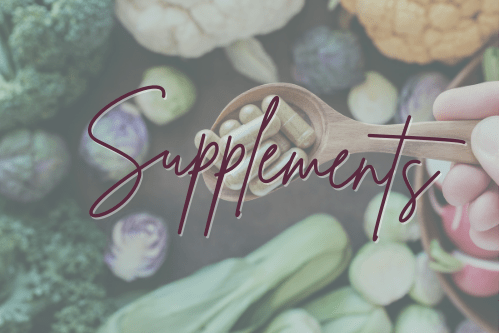I’m often asked if organic food is worth the cost.
It’s the same question I asked about 15 years ago…before I started to understand the impact that high pesticide residue, heavy metals, and low nutrient content can have on inflammation and overall health.
The link between a lack of nutrients and inflammation is a crucial area of nutritional science and medicine research these days.
Inflammation is the body’s natural response to injury or infection.
Chronic inflammation is associated with various health problems, including cardiovascular disease, diabetes, and autoimmune disorders.
Nutrient deficiencies, common in processed foods and conventionally raised meats and produce, can exacerbate and even trigger chronic inflammation.
Here’s what you need to know…
Key Nutrients and Their Roles in Inflammation
Omega-3 Fatty Acids, found in fish oil and flaxseeds, have anti-inflammatory properties. They are essential for maintaining the body’s balance of pro- and anti-inflammatory compounds.
Vitamins (A, B, C, D, E)
- Vitamin A is necessary for the immune system and epithelial health.
- Vitamin C is an antioxidant that helps protect cells from oxidative stress, which can trigger inflammation.
- Vitamin D plays a critical role in modulating the immune system.
- Vitamin E is an antioxidant that protects cell membranes from damage.
- Vitamins B6, B12, and folate are crucial for cellular metabolism and the reduction of homocysteine levels, an amino acid linked to inflammation.
Minerals (Zinc, Magnesium, Selenium)
- Zinc is vital for immune function and has anti-inflammatory effects.
- Magnesium is involved in numerous biochemical reactions in the body, including anti-inflammatory pathways.
- Selenium is another antioxidant that helps reduce oxidative stress and inflammation.
Dietary fiber, especially from whole grains, fruits, and vegetables, supports a healthy gut microbiome and reduces inflammation.
These key nutrients are essential for maintaining the balance of pro- and anti-inflammatory compounds in the body, helping the body fight infections, and decreasing oxidative stress and inflammatory responses such as high homocysteine levels, metabolic syndrome, and nervous system issues.
So what are the “must-haves” and the “nice-to-haves” when buying organic produce?
Earlier this year, the Environmental Working Group (EWG) announced its 2024 Dirty Dozen / Clean Fifteen lists of foods based on the analysis of tens of thousands of produce samples collected by the USDA. The methodology for the testing can be found here.
Even after peeling, scrubbing, or washing produce samples before they were tested, traces of 254 pesticides were found in all fruits and vegetables, and 209 of these were on Dirty Dozen produce.
I get that buying organic produce is not always an option because of cost or availability. That’s where the EWG’s Shopper’s Guide comes in handy. To limit pesticide exposure, it can help you make informed choices when filling your grocery cart with health-promoting fruits and vegetables.
Your simple action this week…
Swap out at least one conventionally grown item on your grocery list with its organic equivalent. You’ll be able to taste the difference!
And if your choice is between eating conventionally grown produce or none at all, go for the fruits and veggies, even if they aren’t organic.
Here’s to your health and vitality!






